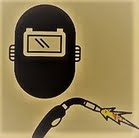The ASME B31.1 – 2022 Power Piping Code plays a pivotal role in ensuring the integrity and safety of power piping systems. One crucial aspect of this code is the meticulous examination and testing of welds to ascertain their quality and structural soundness. In this article we will discuss about visual examination as per Chapter VI of the ASME B31.1 code, titled “Inspection, Examination, and Testing,” is dedicated to this critical aspect of power piping, offering detailed guidelines and criteria for evaluating weld defects. These criteria are essential to maintain the reliability of piping systems, especially in high-pressure and high-temperature applications.
Within this chapter, the ASME B31.1 code outlines a comprehensive framework for examining welds using various non-destructive examination (NDE) methods. These methods are vital in identifying and categorizing weld defects to determine whether they meet the required standards. The acceptance or rejection of welds hinges on the meticulous application of these NDE techniques. Here’s an overview of some key examination methods specified in Chapter VI:
Visual Examination as per B31.1(Paragraph 136.4.2):
Visual inspection is the most fundamental method, involving a thorough visual examination of welds. The code provides clear criteria for rejecting welds with visible defects, such as cracks on the external surface, lack of fusion, incomplete penetration, and excessive weld reinforcement.
Weld defect acceptance/rejection criteria for visual Inspection:
- Cracks on the external surface are unacceptable.
- Lack of fusion on the surface is unacceptable.
- Incomplete penetration is considered unacceptable if the inside surface is accessible.
- Weld reinforcement exceeding specified limits, as detailed in the table below, is unacceptable.
- Undercut greater than 0.8 mm (1/32 in.) deep or exceeding the minimum required section thickness is unacceptable.
- Surface undercut on longitudinal butt welds is unacceptable.
- Any linear indications greater than 5 mm (3/16 in.) in length are considered unacceptable.
- Surface porosity with rounded indications having dimensions greater than 5 mm (3/16 in.) or with four or more rounded indications separated by 1.5 mm (1/16 in.) or less edge to edge in any direction is unacceptable.
- Arc strikes outside of the weld joint are unacceptable.
Reinforcement of Girth and Longitudinal Butt Welds – Summary of Table 127.4.2-1:
| Thickness of Base Metal (T) | Maximum Thickness of Reinforcement for Design Temperature |
|---|---|
| T ≤ 3 mm (1/8 in.) | 1.5 mm (1/16 in.) |
| 3 mm < T ≤ 5 mm (1/8 in. < T ≤ 3/16 in.) | 1.5 mm (1/16 in.) |
| 5 mm < T ≤ 13 mm (3/16 in. < T ≤ 1/2 in.) | 1.5 mm (1/16 in.) |
| 13 mm < T ≤ 25 mm (1/2 in. < T ≤ 1 in.) | 2.5 mm (3/32 in.) |
| 25 mm < T ≤ 50 mm (1 in. < T ≤ 2 in.) | 3 mm (1/8 in.) |
| T > 50 mm (2 in.) | 4 mm (5/32 in.) or 6 mm (1/4 in.) or 1/8 X width of weld (whichever is greater) |
In summary, Chapter VI of ASME B31.1 – 2022 Power Piping Code is a comprehensive guide that sets forth rigorous standards and criteria for assessing welds in power piping systems. Adhering to these standards is crucial for maintaining the safety, reliability, and integrity of power piping networks, especially in industries where the consequences of weld defects can be catastrophic. Therefore, strict compliance with the ASME B31.1 code is essential to ensure the robustness of power piping systems and, ultimately, the safety of personnel and the environment.
